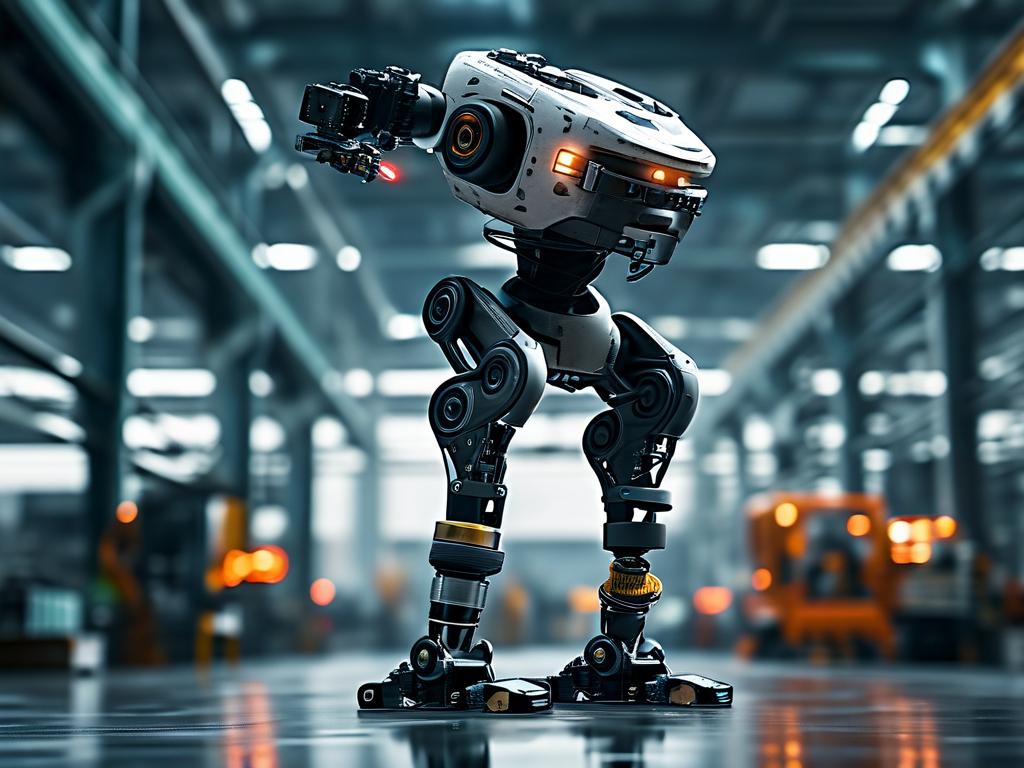In the rapidly evolving world of robotics, vibration and noise reduction technology stands as a critical frontier for enhancing performance and user experience. Excessive vibrations and unwanted sounds can compromise robot efficiency, lead to mechanical failures, and create discomfort in human-robot interactions. This article delves into advanced methods for mitigating these issues, exploring both established and emerging techniques that ensure robots operate more smoothly and quietly across various applications.

Vibrations in robots typically stem from internal components such as motors, gears, and actuators. These mechanical parts generate oscillations during movement, which amplify noise levels and cause wear over time. For instance, in industrial settings, robotic arms handling precision tasks may suffer reduced accuracy due to uncontrolled vibrations, while service robots in homes or hospitals risk disturbing occupants with persistent hums or rattles. Noise, often measured in decibels, not only affects operational reliability but also raises concerns about workplace safety and environmental impact. Addressing these challenges requires a multi-faceted approach, combining passive and active strategies tailored to specific robot designs.
Passive vibration control techniques focus on absorbing or isolating vibrations through material innovations and structural modifications. Common methods include incorporating viscoelastic damping materials, like rubber or specialized polymers, into robot joints and frames. These substances dissipate kinetic energy from vibrations, converting it into harmless heat. Additionally, isolators such as spring mounts or elastomeric bearings can decouple vibrating components from the main body, significantly reducing noise propagation. For example, modern collaborative robots (cobots) often use composite materials with high damping coefficients to achieve quieter operations without compromising agility. This passive approach is cost-effective and reliable but may have limitations in dynamic environments where vibrations vary unpredictably.
Active noise and vibration reduction, on the other hand, employs real-time monitoring and intervention using sensors and actuators. Accelerometers and microphones detect minute vibrations and sound waves, feeding data to control systems that counteract disturbances. Actuators, like piezoelectric elements or electromagnetic shakers, apply opposing forces to neutralize oscillations. A key algorithm in this domain is the Proportional-Integral-Derivative (PID) controller, which adjusts actuator responses based on error signals. Here's a simplified code snippet illustrating a basic PID implementation for vibration control in Python:
def pid_controller(setpoint, current_value, kp, ki, kd, prev_error, integral):
error = setpoint - current_value
integral += error
derivative = error - prev_error
output = kp * error + ki * integral + kd * derivative
prev_error = error
return output, prev_error, integral
This code helps robots maintain stability by dynamically tuning actuator forces. Beyond PID, machine learning algorithms like neural networks are gaining traction, enabling predictive adjustments based on historical vibration patterns. Such active systems excel in complex scenarios, such as autonomous drones or medical robots, where precision is paramount. However, they demand higher computational resources and power, posing challenges for battery-operated devices.
Integrating these technologies opens doors to diverse applications. In manufacturing, robots with enhanced vibration control can handle delicate assembly tasks, reducing scrap rates and downtime. Healthcare robots, such as surgical assistants, benefit from noise reduction to maintain sterile, quiet environments. Even consumer robots, like vacuum cleaners or companions, see improved user acceptance through quieter operation. Real-world case studies highlight successes; for instance, a recent automotive assembly line reported a 30% drop in noise complaints after retrofitting robots with active dampers. Yet, hurdles remain, including the high costs of advanced sensors and the need for lightweight, durable materials that don't add bulk.
Looking ahead, the future of robot vibration and noise reduction is bright, driven by innovations in materials science and AI. Smart materials that self-adapt to vibrations, such as shape-memory alloys, promise more efficient passive control. Meanwhile, edge computing allows for faster on-board processing of sensor data, making active systems more responsive. Researchers are also exploring hybrid approaches, combining passive elements with AI-driven algorithms for optimal performance across all operating conditions. As robots become more integrated into daily life, reducing their acoustic footprint will not only boost efficiency but also foster safer, more harmonious human collaborations.
In summary, advancements in robot vibration and noise reduction technology are transforming the robotics landscape. By leveraging a blend of passive and active methods, engineers can create quieter, more reliable machines that excel in demanding roles. As this field evolves, it will continue to address emerging challenges, paving the way for next-generation robots that operate with near-silent precision. Ultimately, mastering these techniques ensures robots fulfill their potential as indispensable tools in our modern world, enhancing productivity while minimizing disruptions.

